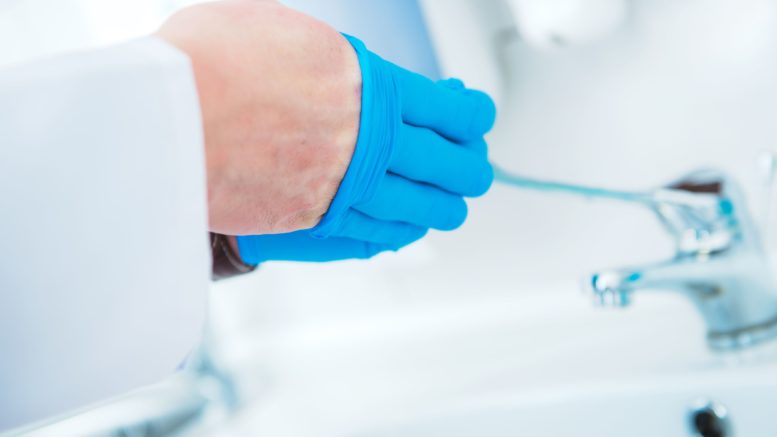Antimicrobial materials or surfaces are advertised as part of infection prevention bundles. However, the efficacy of such antimicrobial surfaces has not been sufficiently investigated in hospitals. In this study, Klupp, et al. (2023) examined the antimicrobial activity of examination gloves with light-activated antimicrobial properties against Gram-positive microorganisms was investigated modelling real live conditions.
In a standardized experimental set-up with dry and realistic contamination, the antimicrobial properties of gloves claiming light dependent antimicrobial activity against Gram-positive organisms were tested in comparison with conventional examination gloves. All gloves were contaminated through a standardized activity of the test persons for construction with contaminated building blocks. For contamination suspensions of Enterococcus faecium ATCC 6057, Acinetobacter baumannii (outbreak strain), methicillin-resistant Staphylococcus aureus ATCC 43300 or E. faecium (VRE) patient isolate were dried on the surfaces. After the standardized activity, the gloves were held for 10 minutes in the light present in the room (bright conditions) and the grade of contamination was determined subsequently by quantitative culture. In one experimental series gloves were held in a dark box after contamination as a control (dark conditions).
The light intensity in all experiments under bright conditions was significantly above the limit value specified by the manufacturer for the activation of antimicrobial properties (> 500 lx). The mean values for experiments with antimicrobial active and non-active gloves were 955 and 935 lx, respectively. As claimed by the manufacture, the gloves showed no sufficient efficacy against A. baumannii under bright conditions. Against Gram-positive microorganisms such as E. faecium, E. faecium (VRE) and methicillin-resistant S. aureus the gloves showed only very low antimicrobial activity with a reduction factor < 1 log10 even after 10 minutes in bright conditions. Interestingly, comparable results for experiments with A. baumannii and E. faecium were shown under dark conditions.
The researchers say that lack of activity of the active principle against Gram-negative microorganisms could be confirmed. The reduction factors of > 4 log10 within 5 min for Gram-positive microorganisms claimed for the product using a standard test procedure (ASTM D7907) could not be confirmed in a realistic experimental test set-up even after 10 min of light exposure. The effectiveness against Gram-positive microorganisms should be further investigated under realistic (dry) conditions, including patient care. At this stage, the use of supposedly antimicrobial gloves should not be recommended, as the belief in their efficacy may encourage the misuse of gloves.
Reference: Klupp E-M, et al. Activity of antimicrobial examination gloves under realistic conditions: challenge not fulfilled. Antimicrobial Resistance & Infection Control. Vol. 12, article number 116 (2023).
